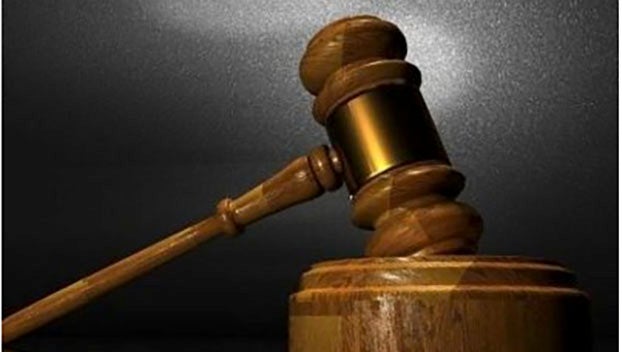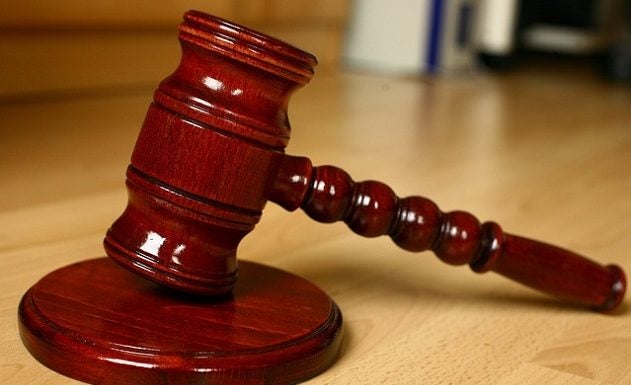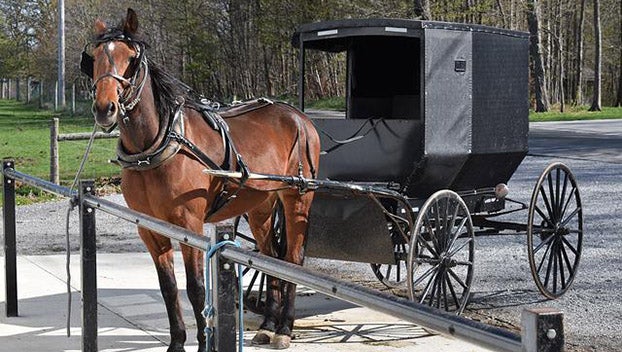Numbers Trend Up
Published 2:56 pm Wednesday, November 23, 2011
PRINCE EDWARD – The County's high school may have struggled to meet federal AYP and state accreditation, but overall student performance is improving.
Paul Cosway, a consultant with Prince Edward's turnaround partner Cambridge Education, presented a comparative analysis of academic performance at the school board's November 9 meeting. Factoring the SOL results in English and math, the high school moved from 290th out of 308 high schools in 2009-10 to 203rd out of 322 high schools in 2010-11.
Of the ten high schools designated in transformation, two showed significant progress, according to information in the report: TC Williams High School in Alexandria, which moved up 93 slots, and Prince Edward.
Cosway noted that it “isn't usual for schools to make great progress in the first year of turnaround…Turnaround is traumatic for schools. It's bad for staff morale. It affects parents. And so many schools…don't make lots of progress.”
The County's high school, tapped for the turnaround program prior to the start of the previous school year, is one of the 128 Title I schools that ranked in the lowest five percent among those authorized, but do not receive Title I funds. The criteria weighed for the designation were the academic achievement of all students in reading and math and that a school has not reduced its failure rate in reading/language arts and/or mathematics by 10-15 percent each year for the past two years.
The school receives federal funding over a three-year span where, partnering with Cambridge, targeting areas for improvement.
The high school made the greatest amount of progress by an individual subject area of high schools in transformation. Prince Edward was 147 out of 154 schools in math for 2009-10 and moved to 65th out of 161 schools in 2010-11.
Cosway assessed that it's “really good news for the high school and we should be giving real credit to…the school board, the division office, (Principal) Craig (Reed) and the partnership for making this amount of progress. It's phenomenal.”
Overall, there are 27 schools in turnaround-ten high schools, seven middle schools and ten elementary schools. According to Cosway, only eight rose in the rankings (including Prince Edward) and only four made statistically significant progress.
While the graduation rate increased, Cosway cited, it is still not enough. Of the ten high schools in turnaround, only five increased their graduation rate, one of which was Prince Edward.
Prince Edward increased its graduation rate less than five percent. The graduation rate prevented the high school from meeting state accreditation.
The percentage of students passing at an advanced level in the SOLs increased in writing, algebra I and II, chemistry, biology and earth science. It remained the same in reading and geometry and went down in all of the social study subjects, as it did for the state as a whole, Cosway highlighted. In addition, the percentage passing algebra II and biology at the advanced level was almost identical with overall state figures.
“You are making progress and that's a good thing,” offered School Board member Dr. Osa Sue Dowdy. “But how close are we to where we need to be…?”
Cosway cited that they still have to improve achievement gaps if they are going to get to safe harbor. He noted that they're still working on the African American achievement gap.
School report cards (available on the state Department of Education's website) have achievement of each subgroup. Cosway noted that attendance still needs to improve-that they are still below the 94 percent that they need.
The graduation rate, he also cited, is “a huge issue” and he noted, “that's why we're not fully accredited any more. Not because of our subject performance. That was fine. In fact it was good, but the graduation rate is below the CTI-it's a new measure…If we were using the old measures for accreditation, we'd be fully accredited.”
Cosway also presented a detailed overview of school Quality Review at the school board meeting. The annual review is part of the partnership with Cambridge Education. The review, he offered, is done as independently as possible.
The Quality Review is essentially an outside look at the high school.
The survey is the second such effort and weighs strengths and areas for improvement for achievement, curriculum, learning and teaching, leadership and management, learning environment, and partnerships.
Overall evaluations in the previous survey assessed that the school was under developed in achievement, curriculum, learning and teaching, leadership and management, and learning environment; the current evaluation deems the school proficient in the same areas. The only area still under developed was that of developing partnerships.
Among the findings in the area of achievement cited in a summary of the report:
In the area of achievement, the report found they are comparable to those of similar populations of students in the district/state; the school addresses specialized needs of students with limited English proficiency; disparities in student achievement are being addressed, and the school is achieving high standards or is improving based on SOL expectations. In areas to be developed, the school does not use data sufficiently to adjust student learning processes for all students and that the school is not addressing the specialized needs of students with disabilities (a subgroup, which Cosway noted, that really did not show growth this year).
In the area of curriculum, the report highlighted strengths-that the curriculum and instructional programs are aligned to the SOL and that the curriculum provides students with a broad range of earning experiences (particularly, Cosway cited, in the career and vocation areas).
As for improvement, it also cited that the curriculum is not well designed to meet the individual learning needs of all students.
Strengths highlighted in the area for learning and teaching included: students are making good progress and that pace of learning is challenging and appropriate for their grade level and level of achievement (and Cosway noted that, overall, students are making much better progress at the school); students demonstrate a high level of time on task; teaching is aligned with the derived, written and posted SOL objectives; teachers demonstrate sound knowledge, skills and understanding of the content or subject taught; teachers work collaboratively to plan lessons (common planning time is beginning to work effectively), which are effective and improve instruction; and students respond to the high expectations for achievement set by teachers.
Areas to be developed include: students are not given sufficient responsibility for, or are involved in, their own learning (with Cosway citing there's a lack of rigor in much of the teaching that needs to be addressed); they are not provided with enough opportunities for independent thinking and problem solving; not all teachers use questioning strategies that promote higher level thinking and problem solving; teaching does not always reflect strategies that appropriately meet the needs of diverse learners (it was noted that there tends to be one or two teaching strategies); that not all teachers use a variety of strategies, data and information to assess all students' achievement of learning objectives; and information derived is not always used to inform instruction and to make adjustments to teaching as necessary.
In leadership and management, the summary of the report highlighted: the leadership and management team monitors and evaluates the instructional program using multiple data sources, the team is visible in classrooms and planning meetings to coach and support staff and that leadership promotes collaborative practices; the team ensures that a comprehensive school improvement plan is developed, shared and implemented and that its focus is on outcomes that drive high expectations for student achievement; the team leads an effective instructional team, which supports and develops all teachers, the team demonstrates effective interpersonal and communication skills that enable the school to run smoothly, the team represents the school and/or district appropriately, and that the team demonstrates the organizational skills to manage the school.
An area that needs to be developed, it was noted, is that the team does not ensure that all levels of staff have responsibilities for specific terms within the school improvement plan and doesn't involve the teachers collaboratively in developing the school improvement plan and helping to take it forward.
The report also highlighted a long list of strengths in learning environment. It also highlighted that students are not encouraged enough to show initiative, take responsibility and contribute to the school community.
In areas identified to be developed for partnerships, it was noted that communication between home and school is not always ongoing two-way and purposeful; parents and guardians receive progress reports which are clear, but not always useful in helping them understand achievement levels or next steps in learning; parent/guardian involvement is not solicited effectively, and that partnerships are not sufficiently fostered through positive collaboration with community stakeholders to support children's learning.
In addition to the report, school board members have also received the results of a tripod survey-a survey of parents, students and teachers and includes data that can be factored in developing priorities.





